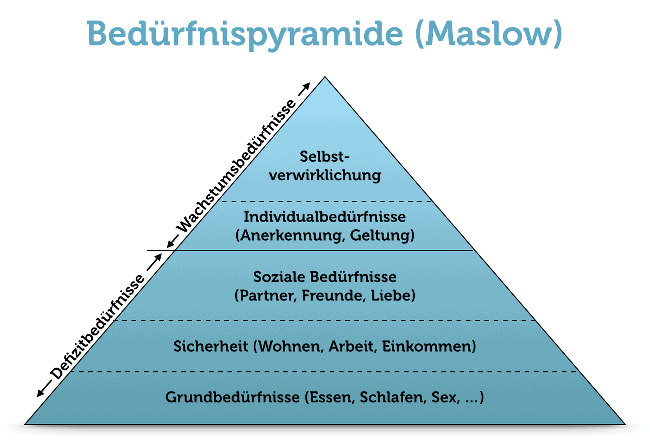Introduction of the Career Model 2.0
Pyramid of needs and the pursuit of self-actualization.

"Contentment and happiness result from the pursuit of self-actualization"
based loosely on Abraham Maslow
Why a career model?
The vocational training is successfully completed, the studies finished. Here we go, the world is waiting!
Yes and no. Genau genommen geht das Lernen weiter, jedoch wird der Praxisanteil größer. Es geht jetzt um den Aufbau von Erfahrung – die letztlich unschätzbar wertvoll ist.
Over the years, there inevitably comes a point when the question arises as to what the company can still offer you personally or what opportunities there are for further development. We are all always striving for fulfillment of our needs and the ideal of self-realization, and therefore want to have this question answered at some point. This is the point at which the new career model should take effect, because Unfortunately, the answer to this important question is not always immediately obvious, either because there are no corresponding models or because the question is not addressed by superiors in employee appraisals and thus possibly leads to resignation or even frustration.
Our career model is designed to offer individual and flexible development paths. Our ideal is to keep talented and motivated people of all backgrounds working for the company for as long as possible. Over the time of the cooperation this leads to invaluable growth effects and both parties profit equally from a long and successful cooperation. People develop over the years and we would like to accompany and support that. This requires an encounter at eye level, characterized by fairness and the opportunity for self-expression.
According to Abraham Maslow, human development is based on different needs that build on each other. To this end, he worked from 1943 until his death in 1970 on his social psychological model, which is simplified as the widely known pyramid of needs.
In the lower areas lie the basic needs (also deficit needs), the non-fulfillment of which triggers frustration. In the higher levels are the needs, the fulfillment of which cause satisfaction and feelings of happiness in us and are therefore called growth needs. Since these can basically never be completely satisfied, we all always strive for more.
This is exactly where we would like to start with our career model and show development opportunities that support the pursuit of self-realization.

Does everything have to be uphill?
Higher, faster, further… This is often the classic idea behind a career model. However, we would like to offer more here. Our career model is flexible – in every direction. This means that, if you wish, we can also offer you the opportunity to take it a little easier in the last few years before you retire, to take a step back from a position of responsibility, either to offer opportunities to younger colleagues, or simply to return to your old position because you enjoyed it more.
In many companies, this sort of thing is viewed critically, with the result that long-serving and experienced colleagues often see no other option than to move to another company if such a request is made. This means that the know-how and the personality are lost forever. We want to prevent this in any case and hope to create a variety of opportunities for those who simply enjoy their work and do not always want to go higher, faster, further…
It's possible!
A company is only as good as its employees. Since we focus on long-term cooperation, the satisfaction of all colleagues is close to our hearts.
Other contributions:

Process monitoring with Machine Vision
Effective process monitoring is crucial to the success of your production. Image processing systems can be a helpful tool here.

Object recognition with Machine Vision
Do you want to scan a barcode simply and easily? Then a smart camera is a must for your efficient production.

CONNECTA on Tour
On April 30, 2024, the “Connecta on Tour” trade fair took place at evopro systems engineering AG in Regensburg.

8 reasons for automated barcode scanning in manufacturing
Do you want to scan a barcode simply and easily? Then a smart camera is a must for your efficient production.

5 real-life smart city examples
What smart city examples are there? You can find out in this article.

Finally: The new VIU2 PoE camera is here!
The VIU2 PoE camera is here! You can find out why PoE is an important feature in this article.

evoNEWS – The industry newsletter of evopro systems engineering AG
evoNEWS the new quarterly industry newsletter from evopro systems engineering AG.

Neuer Teamcity Build-Agent
Unsere Produktentwicklung hat vergangene Woche einen neuen Teamcity Build-Agent bekommen. Wie genau sie davon profitieren, lesen Sie hier!

OCR – What does it mean?
OCR is a text recognition technology. Using OCR, it is possible to convert analog text into machine-readable characters.

Machine Visionas a solution to the shortage of skilled workers?
Germany as a business location is currently being put to the test. Can Machine Visionimprove the skills crisis?



